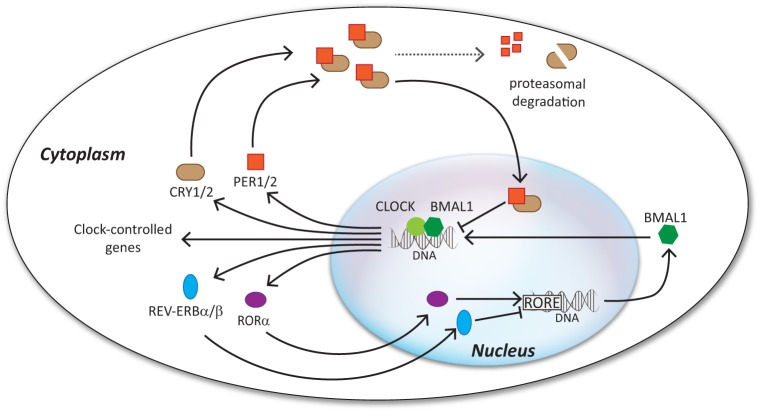FIGURE 1.
Mammalian TTFL. The mammalian clock is sustained by a series of feedback loops involving several genes and the proteins that they encode. The two positive activators, CLOCK and BMAL1, initiate the transcription of the clock genes Per1/2, Cry1/2, Rorα, and Rev-erbα/β. PER1/2 and CRY1/2 proteins accumulate, dimerize, and translocate into the nucleus, where they bind to the CLOCK-BMAL1 dimer, thereby inhibiting its transcriptional activity. Eventually, proteasomal degradation of PER1/2 and CRY1/2 relieves the transcriptional repression on the CLOCK-BMAL1 complex, and the cycle can restart again. An additional loop involves the nuclear receptors RORα and REV-ERBα/β, which activate and repress the transcription of Bmal1, respectively. RORE, retinoic acid receptor-related orphan receptor response element.

